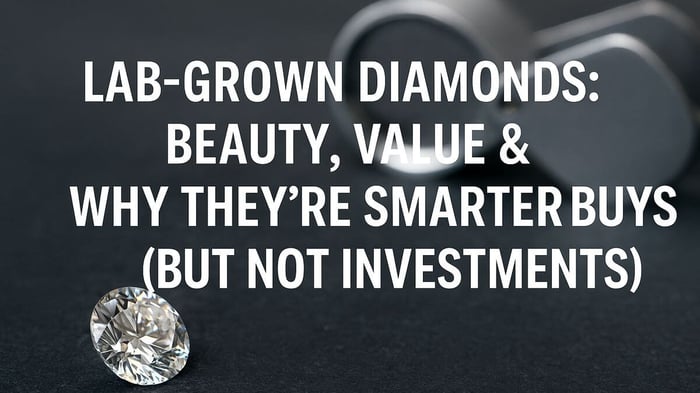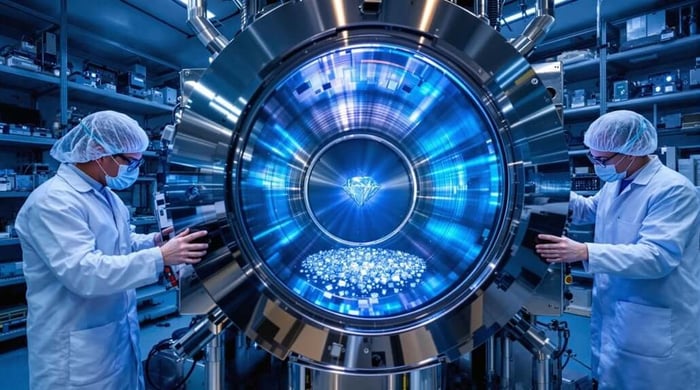In This Article
- Key Takeaways
- Understanding Lab Diamond Investment
- Lab-Grown vs. Natural Diamonds: Beauty vs. Investment
- Market Demand and Trends
- Financial Considerations for Buyers
- Market Position and Consumer Demand
- Environmental and Ethical Impacts
- Beauty Over ROI
- Where Beauty, Value, and Craftsmanship Meet
- FAQs
Lab-grown diamonds have emerged as one of the most talked-about innovations in the jewellery world, reshaping the conversation around beauty, sustainability, and value. Created using cutting-edge technology that replicates natural diamond formation, these gems have captivated consumers seeking ethical and environmentally responsible alternatives to mined stones. But is lab diamond investment a viable option?
We will examine whether lab-grown diamonds can be a smart investment. Or are they better understood as beautiful, meaningful purchases with a price tag that’s easier to love? Read on to find out more!
Key Takeaways
- Lab diamonds offer excellent affordability and beauty for buyers.
- Consumer demand is rising, especially among younger, ethical shoppers.
- As financial investments, they carry significant resale and value limitations.
Understanding Lab Diamond Investment
Investing in lab-grown diamonds means understanding the difference between price and value and being clear about what kind of return you’re seeking. While they share the physical and aesthetic properties of natural diamonds, lab-grown stones behave very differently in financial terms.
Definition and Overview
Advanced technologies such as HPHT (High Pressure High Temperature) and CVD (Chemical Vapor Deposition) create lab-grown diamonds. The result? These diamonds are chemically and optically identical to their natural counterparts, often at retail prices that are 30–50% lower.
Consumers who prioritise sustainability and ethics find lab-grown diamonds particularly appealing due to their lower costs, which also provide access to larger, higher-quality stones within the same budget.
8ct Lab Diamond Tennis Bracelet D/VVS Quality Set in 18k White Gold
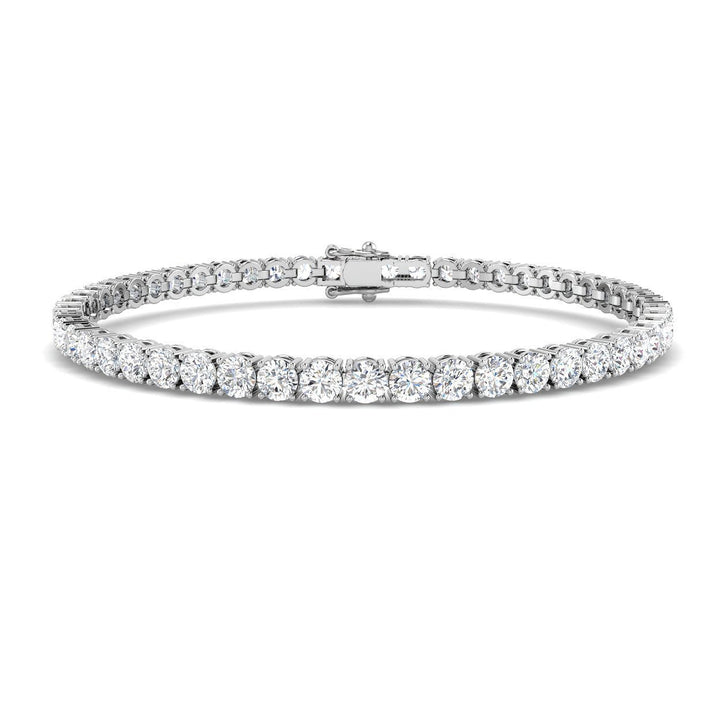
£3,494.00
£7,115.00
Wrap your wrist in luxury with this exquisite Lab Diamond Tennis Bracelet, expertly set in 18k White Gold. The 8 carats of D/VVS quality round lab-grown diamonds offer unrivalled brilliance and shine. Proudly designed and handcrafted in Britain, this piece… read more
Lab-Grown vs. Natural Diamonds: Beauty vs. Investment
The key difference between natural and lab-grown diamonds lies in their origin and their scarcity.
Natural diamonds formed over billions of years under the Earth’s surface, making them rare and sometimes valuable as an asset. But even natural diamonds are not guaranteed investments: most commercial-grade diamonds (the kind people typically buy in engagement rings or earrings) do not appreciate in value and can have poor resale outcomes.
Lab-grown diamonds, while equally beautiful, lack natural scarcity, and as production scales up, their prices have gradually declined. For this reason, their resale value is typically much lower than both their purchase price and that of natural diamonds.
So, while natural diamonds occasionally act as investments (particularly large, high-clarity, rare-colored stones), most consumer diamond purchases, mined or lab-grown, should be approached as meaningful emotional purchases, not financial investments.
Lab Diamond 1.00ct Cluster Ring D/VVS Quality in 18k Yellow Gold
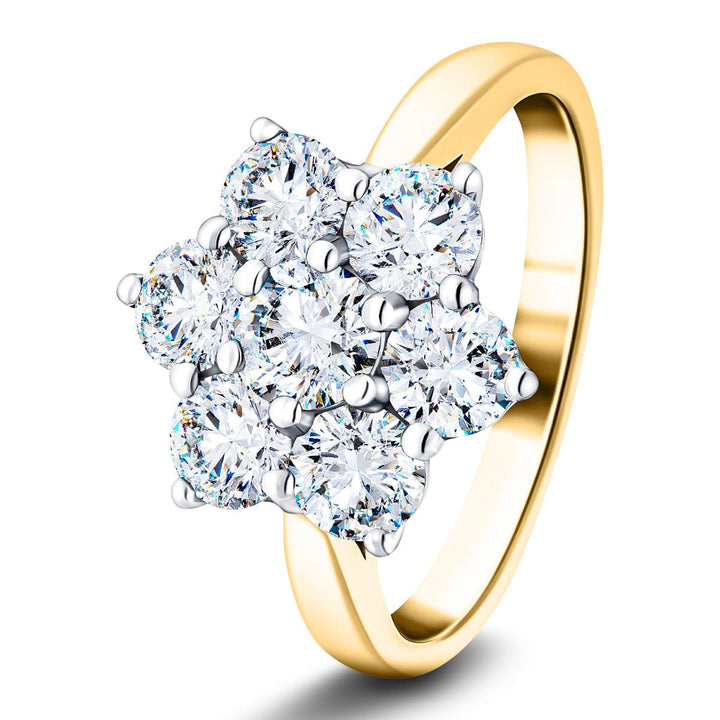
£769.00
£1,595.00
Discover the timeless beauty of the Lab Diamond 1.00ct Cluster Ring, expertly crafted in 18k yellow gold. This piece captivates with its delicate design, featuring a band 2.3mm wide and a prominent head measuring 11.0mm. The ring showcases 1.00ct of… read more
Market Demand and Trends
Consumer interest in lab-grown diamonds is skyrocketing, especially among Millennials and Gen Z shoppers who value ethical sourcing, sustainability, and transparency. This demand has caused a shift in market dynamics, placing lab-grown diamonds at the forefront of the engagement ring and fine jewellery industry.
What's the good news for buyers? You can now purchase more size, better clarity, or more intriguing cuts and colours for the same money compared to a mined diamond. And since most people don’t buy jewellery with resale in mind, the emotional “return” of a lab-grown stone may feel far greater than its financial return.
Financial Considerations for Buyers
It’s important to separate financial investment from emotional and aesthetic value when considering lab-grown diamonds.
Resale Value Analysis
Today, the resale market for lab-grown diamonds is limited. Unlike gold or certain rare natural diamonds, lab-grown stones typically lose value upon purchase and have little established secondary market. Buyers should see these diamonds as lasting treasures, not as appreciating assets.Carat Weight and Pricing Factors
Lab-grown diamonds offer a size advantage; you can often afford a significantly larger stone for the same price as a smaller mined diamond. While this advantage won’t translate into investment gains, it offers substantial beauty and emotional value at a more accessible cost.Production Costs Impact
Advances in lab-grown production have steadily lowered costs, which may continue to push retail prices downward. For buyers, this means more affordable luxury; for would-be investors, it means the market faces long-term price pressure.
Technology and Production Methods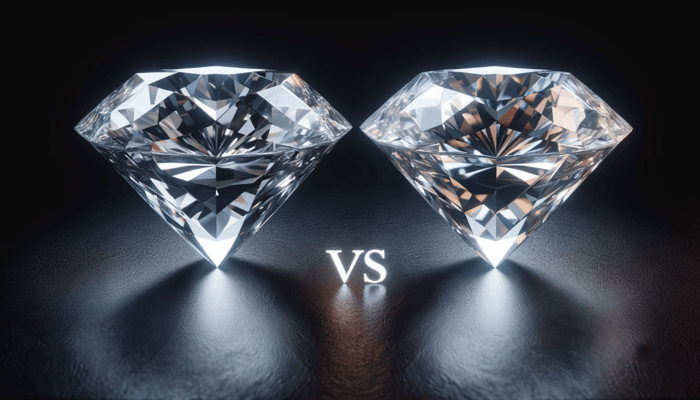 Both HPHT and CVD methods have revolutionized the diamond industry. HPHT mimics natural conditions by applying intense heat and pressure to carbon, while CVD builds diamond crystals layer by layer in a plasma reactor. These methods allow for stunningly pure, customizable diamonds and have drastically reduced the environmental toll associated with mining.
Both HPHT and CVD methods have revolutionized the diamond industry. HPHT mimics natural conditions by applying intense heat and pressure to carbon, while CVD builds diamond crystals layer by layer in a plasma reactor. These methods allow for stunningly pure, customizable diamonds and have drastically reduced the environmental toll associated with mining.
Ongoing improvements in these technologies have made lab-grown diamonds more sustainable and accessible, further boosting their appeal to modern consumers.
20ct Lab Diamond Tennis Necklace D/VVS Quality Set in Silver
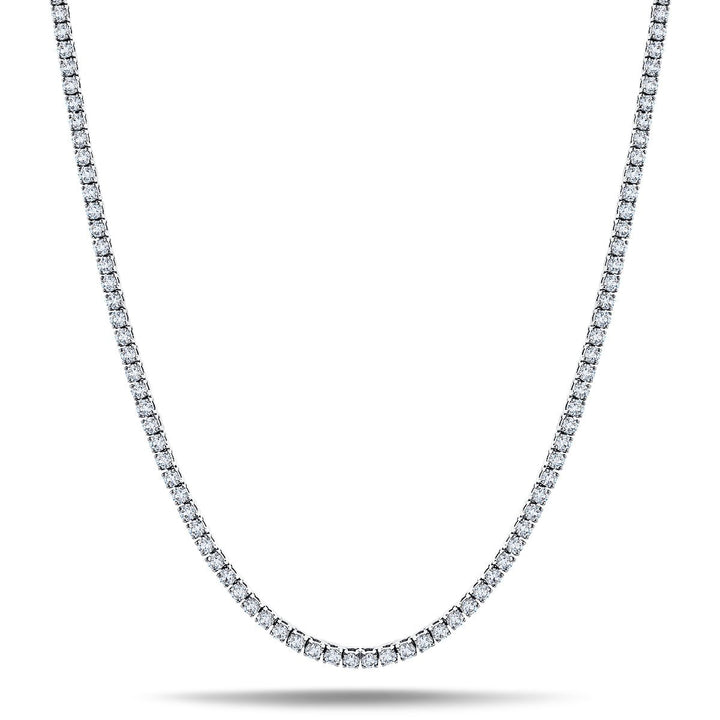
£6,287.00
£12,805.00
This tennis necklace is set in silver and offers an affordable luxury with 20ct of lab-grown D/VVS quality diamonds. Handcrafted by UK artisans, each diamond is claw set, resulting in a dazzling and elegant piece. This 17" necklace is UK-hallmarked… read more
Market Position and Consumer Demand
Lab-grown diamonds have found their strongest foothold in engagement rings and custom jewellery. Consumers are drawn to the opportunity to design unique pieces, often with a lower environmental footprint and a higher carat size for the price.
Gen Z and Millennials are especially enthusiastic adopters, valuing ethical production and affordable luxury. Social media amplifies this trend, showcasing distinctive styles and encouraging consumers to think beyond traditional mined diamonds.
Environmental and Ethical Impacts
The environmental and social case for lab-grown diamonds is strong. Unlike mining, which often causes land disruption, excessive water consumption, and human rights concerns, lab-grown diamonds avoid many of these harms. While production still consumes energy (sometimes from fossil fuels), many producers are shifting toward renewable energy sources, further improving sustainability.
However, it’s worth acknowledging the complexity: some mining communities depend on diamond revenues, and a rapid industry shift poses challenges for local economies. Brands like De Beers are increasingly investing in programs to balance tradition with innovation.
Beauty Over ROI
Despite their extraordinary beauty, ethical assurance, and price advantages, lab-grown diamonds should not be considered traditional investments. To be fair, most natural diamonds should also not be considered traditional investments.
For the average buyer, whether natural or lab-grown, a diamond purchase is a personal statement, an heirloom, or a symbol of love — not a strategy for financial gain. With lab-grown diamonds, the potential financial loss is often far lower because you’re paying less upfront and gaining more in terms of size, sparkle, and conscience.
Your lab diamond investment isn’t measured on a balance sheet; it’s measured in the joy, meaning, and legacy it brings.
10ct Lab Diamond Tennis Bracelet D/VVS Quality Set in 925 Silver
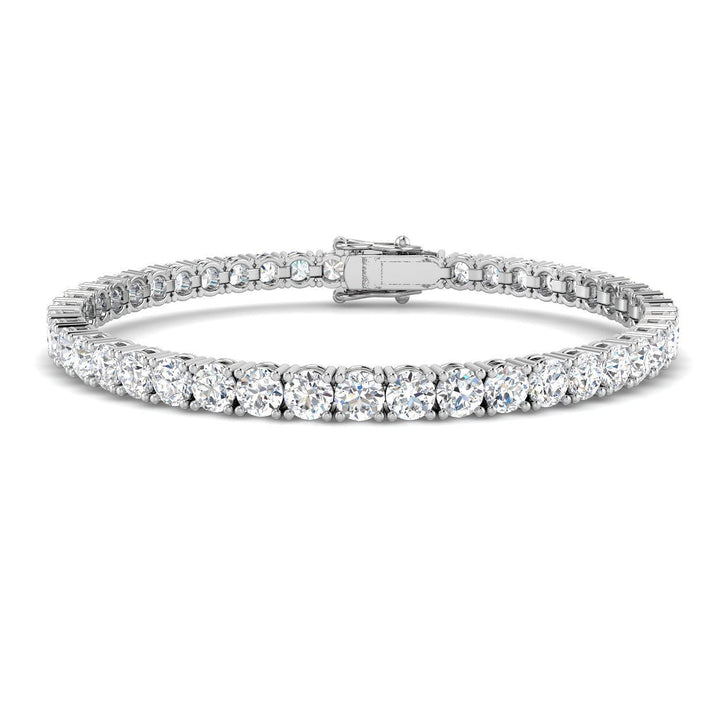
£2,896.00
£6,005.00
Capture the room's attention with this breathtaking 10ct Lab Diamond Tennis Bracelet, set in 925 Sterling Silver. The row of dazzling round diamonds weighing a total of 10 carats lends a touch of class and luxury. The genuine diamonds are… read more
Where Beauty, Value, and Craftsmanship Meet
As we’ve explored, lab-grown diamonds offer exceptional beauty, ethical assurance, and outstanding value — not as financial investments, but as deeply meaningful, lasting symbols of love and style.
At After Diamonds, you’ll find a carefully curated collection of lab-grown diamond jewelry, all designed and handcrafted in the UK. We’re proud to offer every piece with a lifetime workmanship guarantee and a 30-day return or exchange program, giving you total confidence in your purchase.
Discover ethical luxury that lasts — visit afterdiamonds.co.uk today and find the perfect lab diamond to treasure.
FAQs
Do lab-grown diamonds look different from natural diamonds?
No — lab-grown diamonds are chemically, physically, and optically identical to natural diamonds. Even trained gemologists need specialized equipment to tell them apart. To the naked eye, they sparkle just as beautifully.
Do lab-grown diamonds come with certificates?
Yes. Many lab-grown diamonds are graded and certified by leading gemological labs such as IGI (International Gemological Institute) or GIA (Gemological Institute of America). Always request a certificate when buying.
Will lab-grown diamonds last as long as natural diamonds?
Yes. Lab-grown diamonds are just as durable as natural diamonds, with a hardness of 10 on the Mohs scale. They’re suitable for everyday wear and can become treasured heirlooms.
Why are lab-grown diamonds less expensive?
Lab-grown diamonds are not scarce — they can be produced efficiently in laboratories, which lowers costs. In contrast, natural diamonds are rare and require costly mining and distribution. This price difference lets you get a larger or higher-quality diamond for the same budget.
Can I insure lab-grown diamond jewellery?
Yes. Most jewellery insurance providers cover lab-grown diamonds. You’ll typically need an appraisal or purchase receipt, and the cost to insure is often lower than for mined diamonds because of the lower replacement cost.
Do lab-grown diamonds hold their value?
Lab-grown diamonds typically depreciate after purchase, and the resale market is still developing. While they offer excellent emotional and aesthetic value, they should not be seen as financial investments.
Are all lab-grown diamonds eco-friendly?
Lab-grown diamonds generally have a smaller environmental footprint compared to mined diamonds, but energy use varies by producer. Some labs are now using renewable energy to further reduce their environmental impact. Look for brands that disclose their sustainability practices.
Can lab-grown diamonds be customised in colour or shape?
Yes! One of the advantages of lab-grown diamonds is that they can be created in a range of colours (like pink, blue, or yellow) and cut into almost any shape. This makes them an exciting option for personalised or custom jewellery; but remember, customisation of this type happens at the point of manufacture; the retailer cannot change the colour or shape of a diamond already in the jewellery you like!


